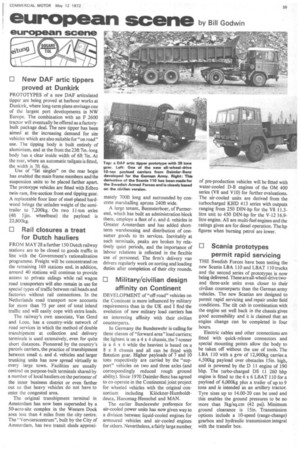0 Rail closures a treat for Dutch hauliers
Page 65

If you've noticed an error in this article please click here to report it so we can fix it.
FROM MAY 28 a further 150 Dutch railway stations are to be closed to goods traffic in line with the Government's rationalization programme. Freight will be concentrated on the remaining 169 stations and, in addition, around 40 stations will continue to provide access to private sidings while rail wagon road transporters will also remain in use for special types of traffic between rail heads and factories without rail connections. In the Netherlands road transport now accounts for more than 75 per cent of total inland traffic and will easily cope with extra loads.
The railway's own associate, Van Gend and Loos, has a country-wide network of road services in which the method of double transhipment at collection and delivery terminals is used extensively, even for quite short distances. Pioneered by the country's parcels carriers, the practice of transhipment between small c. and d. vehicles and larger trunking units has now spread virtually to every large town. Facilities are usually centred on purpose-built terminals shared by a number of local hauliers on the perimeter of the inner business district or even farther out so that heavy vehicles do not have to enter the congested area.
The original transhipment terminal in Amsterdam has now been superseded by a 50-acre-site complex in the Western Dock area less than 4 miles from the city centre. The " Vervoerscentrum", built by the City of Amsterdam, has two transit sheds approxi mately 700ft long and surrounded by concrete marshalling aprons 240ft wide.
A large tenant, Beemsterboer, of Purrnerend, which has built an administration block there, employs a fleet of c. and d. vehicles in Greater Amsterdam and has added shortterm warehousing and distribution of consumer goods to its services. Inevitably at such terminals, peaks are broken by relatively quiet periods, and the importance of labour relations is reflected in the flexible use of personnel. The firm's delivery van drivers regularly work on sorting and loading duties after completion of their city rounds.
















































































































































































































